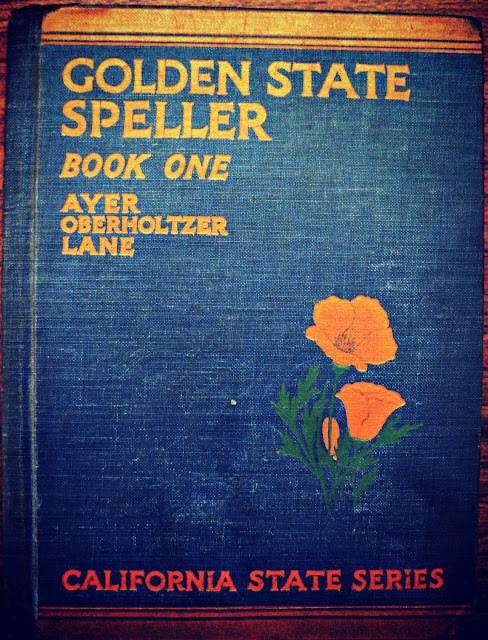 |
"Mucho hay que chupar"
Goya, Caprichos plate 45 |
I love monsters. Well, yes and no -- better put: I find monsters to be compelling subjects of both scholarly and personal interest. Monsters are pretty thrilling to think about in and of themselves, but I find their backstories to be just as interesting. Ken Gelder, in his text The Horror Reader, reminds us that: "the word monster is linked to the word demonstrate: to show, to reveal. This link reminds us that monsters signify, that they function as meaningful signs."* Monsters, and the monstrous, take up a lot of space in my working imagination. Where do monsters come from? How are they created? Why do they take the form that they do? What are they indicative of? Can we make them go away? These are the kinds of BIG THOUGHTS that I chew over on a regular basis.
One of my main research and writing interests within the subject of monsters and the monstrous is the Monstrous Feminine: female representations of the monstrous, in all the myriad of forms. Old crones; strange girls; Jezebels, Lolitas, and other women and girls with abnormal/threatening sexual appetites;** vampiresses; witches; sirens; banshees; bad mothers; cat ladies; insane women in the attic... the list goes on and on. If we were to reduce the feminine to its most basic/base (and I don't mean this to be complimentary) biological function, the vagina dentata joins the gang as well. These lady monsters thrill and frighten in ways that set them apart from (gentle?)man -- or masculine -- monsters, and this is tied directly to their abnormal*** -- or even total lack of -- (perceived) femininity.
Any and all female subjects that fail to meet normative feminine representations are fair game. In the spooky world of magical creatures, included are the aforementioned witches and vampiresses, but in our own day-to-day realities, apart from the aforementioned Jezebels, Lolitas, bad mothers, and cat ladies, there are other pejoratives that we, sadly, hear too often: ice queens, bitches, sluts, dykes, cunts. These are all "subjects" that are dangerous, taboo -- either "too much" or "too little", or even "not at all". They are threatening because they transgress the very gender norms set in place to define them.
.jpg) |
| Martí at the time of her arrest, 1912. |
Enriqueta Martí was not just a child abductor, a pimp, a serial killer. She was a Woman child abductor, a Woman pimp, a Woman serial killer. Her behavior went against everything that "womanhood" entails: piety, purity, submissiveness, domesticity. She was the opposite of nurturing, the opposite of fertility, abundance, life, and love. Through her chosen profession, she became the anti-mother, the feminine turned inside out: a monster. Martí never had/kept children of her own. She was married, but estranged from a husband she showed no interest in making a life with. At the time of her arrest, she was 43 years old and living alone, made wealthy by her various enterprises. She rejected normative femininity -- bourgeois "womanhood" -- completely. Perhaps these things also lead to her infamy, as they do for so many mothers who kill their children and housewives who kill their husbands.
In the eyes of the press, she was a vampire:**** preying on the weak (children), exsanguinating their bodies. This classification has always seemed strange to me, as I see her wealthy clients -- those who actually paid to abuse these children, and later to benefit from "healing" and "rejuvenating" tinctures and poultices made of their bodily parts -- to be the true vampires. Martí was an opportunist, a person who abused and took advantage of others (both the children she abducted and the wealthy who patronized her) due to her own avarice. Ultimately, she was more an evil witch than any other kind of monster. The two young girls rescued from her apartment in the winter of 1912 recounted for the press the rooms and closets locking away bags of children's clothing, bones, and hair, jars and vats filled with coagulated blood, bodily fats, and organs. During her interrogation she referred to herself as a "healer", a
curandera. The police reported finding black books filled with potions and recipes, client lists and accounts. The story is a strange, urban retelling of the Grimms'
"Hansel and Gretel", the witch guarding recipes and ingredients for macabre human "dishes".
 |
"Cooking Witches"
Source: Geschichte Österreichs. Author unknown.
|
The worst of it was that these "dishes" were not made for her own consumption, but for a market of complicit, elite benefactors protected by Barcelona's plutocracy. After her arrest, Martí languished in the women's jail waiting for a trial that was forever being postponed. She was killed by her fellow inmates one year and three months after her arrest, and all her black books and client lists mysteriously disappeared shortly after. Enriqueta Martí is not the only monster in this story, and it's a shame that we forget it even until this day. We'll never know how many clients she had over her twenty year long career, how many conspirators she had, that never had to pay for their actions.
* Gelder, Ken. The Horror Reader. London: Routledge, 2000. 81.
** Let's get real, any sexual appetite in women/girls is regarded as abnormal and threatening.
*** By abnormal, of course, I mean anything that falls beyond the realm of the normal or the normative.
**** She became known as the Vampiress of the Carrer Ponent (the street on which her last victims were found, in one of her many apartments scattered throughout the city).











.jpg)





